More Poor Richard, Part 2
by Dr. Mark David Major, AICP, CNUA-A, The Outlaw Urbanist contributor
Courteous Reader,
I attempted to win your favor when I wrote my first Almanac for Architects and Planners, in the name of the public good and professional betterment, by way of earning some profit and a wife. I am gratified by your expression of encouragement for my tireless efforts dedicated to these aims. Alas, my circumstances still find me exceedingly poor and, unluckily, exceedingly wifeless. I am required to earn some profit to address both problems whilst now addressing a third, namely testing the proposition that insanity is “doing the same thing over and over again and expecting different results.” To satisfy my own particular brand of insanity, I have written more proverbs and whimsical sayings for your benefit and, hopefully, my own.
As before on The Outlaw Urbanist, I write this new Almanac in increments of ten, according to the dictates of Moses and the Almighty. However, once published as an Almanac for Architects and Planners, the proverbs and witticisms were gathered into a number equal to the days of the week, after being reliably informed that both seven and ten are sacred numbers. My desired requirement for a wife is sufficient motive to write this new Almanac in the hope it will find your favor and retweets as a means of demonstrating the usefulness of my continued efforts but also your charity to this sane Friend and poor Servant,
Richard
On Architecture
11. Quality is presence of value and not absence of mistake.
12. Profit is not an aesthetic choice. It’s a surrender.
13. The act of design condemns all architects and planners to play God poorly, some more so than others.
14. Good design enhances everything as surely as bad design defiles all.
15. Architecture cannot save the world, only people can. This is why God sent a carpenter to be the ‘temple’.
16. If architecture is a language, then a lot of architects are speaking in gibberish.
17. Don’t judge a building by its façade. Every building is a story waiting to unfold for those willing to read it.
18. Architecture always lies. Technological innovations only make the lies more transparent.
19. Standardization is a blessing for quantity and a curse for quality in architecture.
20. Architecture represents the outward appearance of things best when the architect understands the inward significance of those things.
Issue 3 of More Poor Richard for Architects and Planners cometh soon!

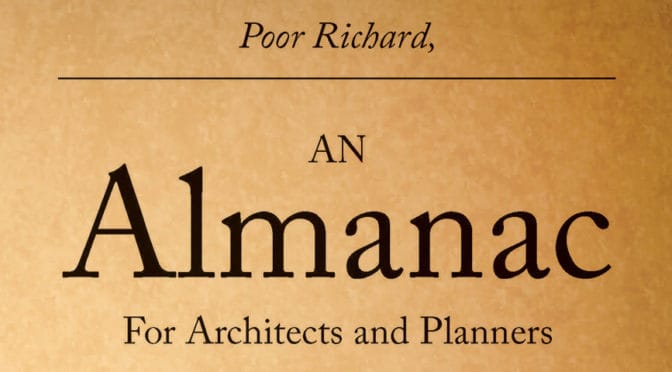


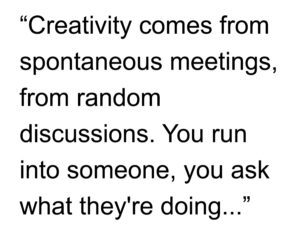 “Steve had the firm belief that the right kind of building can do great things for a culture,” said Pixar’s president Ed Catmull… (John) Lasseter had originally wanted a traditional Hollywood studio, with separate buildings for various projects and bungalows for development teams. But the Disney folks said they didn’t like their new campus because the teams felt isolated, and Jobs agreed. In fact he decided they should go to the other extreme: one huge building around a central atrium designed to encourage random encounters. Despite being a denizen of the digital world, or maybe because he knew all too well its isolating potential, Jobs was a strong believer in face-to-face meetings.
“Steve had the firm belief that the right kind of building can do great things for a culture,” said Pixar’s president Ed Catmull… (John) Lasseter had originally wanted a traditional Hollywood studio, with separate buildings for various projects and bungalows for development teams. But the Disney folks said they didn’t like their new campus because the teams felt isolated, and Jobs agreed. In fact he decided they should go to the other extreme: one huge building around a central atrium designed to encourage random encounters. Despite being a denizen of the digital world, or maybe because he knew all too well its isolating potential, Jobs was a strong believer in face-to-face meetings. “There’s a temptation in our networked age to think that ideas can be developed by email and iChat,” he said. “That’s crazy. Creativity comes from spontaneous meetings, from random discussions. You run into someone, you ask what they’re doing, you say ‘Wow.” and soon you’re cooking up all sorts of ideas.” So he had the Pixar building designed to promote encounters and unplanned collaborations. “If a building doesn’t encourage that, you’ll lose a lot of innovation and the magic that’s sparked by serendipity,” he said. “So we designed the building to make people get out of their offices and mingle in the central atrium with people they might not otherwise see…” “Steve’s theory worked from day one,” Lasseter recalled. “I kept running into people I hadn’t seen in months. I’ve never seen a building that promoted collaboration and creativity as well as this one.”
“There’s a temptation in our networked age to think that ideas can be developed by email and iChat,” he said. “That’s crazy. Creativity comes from spontaneous meetings, from random discussions. You run into someone, you ask what they’re doing, you say ‘Wow.” and soon you’re cooking up all sorts of ideas.” So he had the Pixar building designed to promote encounters and unplanned collaborations. “If a building doesn’t encourage that, you’ll lose a lot of innovation and the magic that’s sparked by serendipity,” he said. “So we designed the building to make people get out of their offices and mingle in the central atrium with people they might not otherwise see…” “Steve’s theory worked from day one,” Lasseter recalled. “I kept running into people I hadn’t seen in months. I’ve never seen a building that promoted collaboration and creativity as well as this one.”
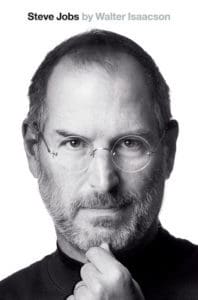
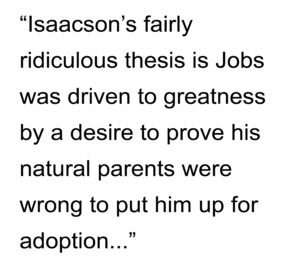 There are many useful, some wonderful insights (usually originating from Jobs himself) contained within, so it is well worth your time to read. In the end, what shines through in the book, despite its problems, is the genius and greatness of Steve Jobs.
There are many useful, some wonderful insights (usually originating from Jobs himself) contained within, so it is well worth your time to read. In the end, what shines through in the book, despite its problems, is the genius and greatness of Steve Jobs.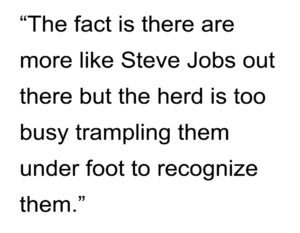 Was Steve Jobs perfect? No, he was human. Personally, I never asked for Apple products to be perfect. I only asked that Apple products be the best in the world and, usually, they were. I never asked Steve Jobs to be anything than what he was: a brilliant businessman, an insight artist, and a (sometimes) source and (often) shepherd of technological innovation. In the end, what was remarkable about Steve Jobs was not that he changed the world but he changed the world in the face of the ‘conventional wisdom’, which is often polite code for the stupidity of the consensus. Frankly, I prefer to live in Jobs’ reality. Along the way, he lived a remarkable life. Surely, that is enough. The world seems smaller without Steve Jobs in it. We have Jobs’ Apple to thank for it but it is also a testament to the legacy of Steve Jobs. He will be missed.
Was Steve Jobs perfect? No, he was human. Personally, I never asked for Apple products to be perfect. I only asked that Apple products be the best in the world and, usually, they were. I never asked Steve Jobs to be anything than what he was: a brilliant businessman, an insight artist, and a (sometimes) source and (often) shepherd of technological innovation. In the end, what was remarkable about Steve Jobs was not that he changed the world but he changed the world in the face of the ‘conventional wisdom’, which is often polite code for the stupidity of the consensus. Frankly, I prefer to live in Jobs’ reality. Along the way, he lived a remarkable life. Surely, that is enough. The world seems smaller without Steve Jobs in it. We have Jobs’ Apple to thank for it but it is also a testament to the legacy of Steve Jobs. He will be missed.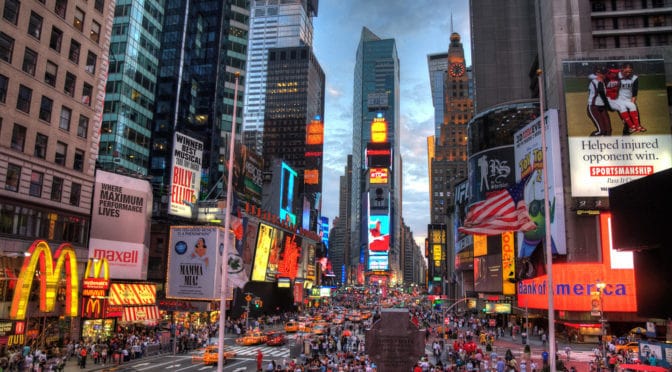
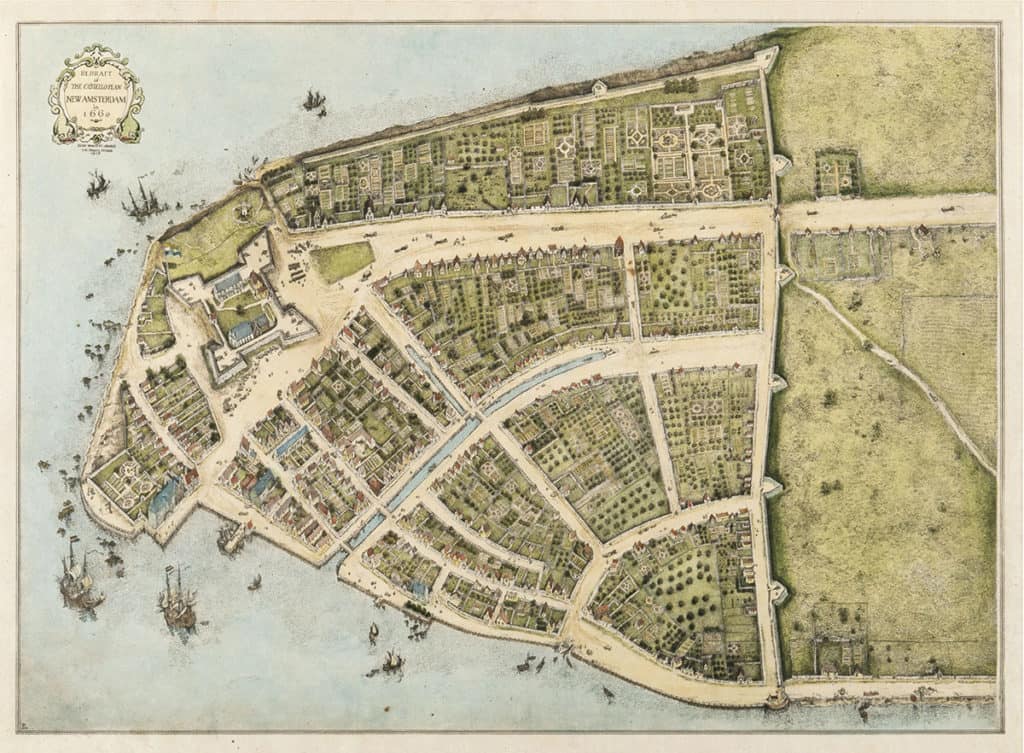
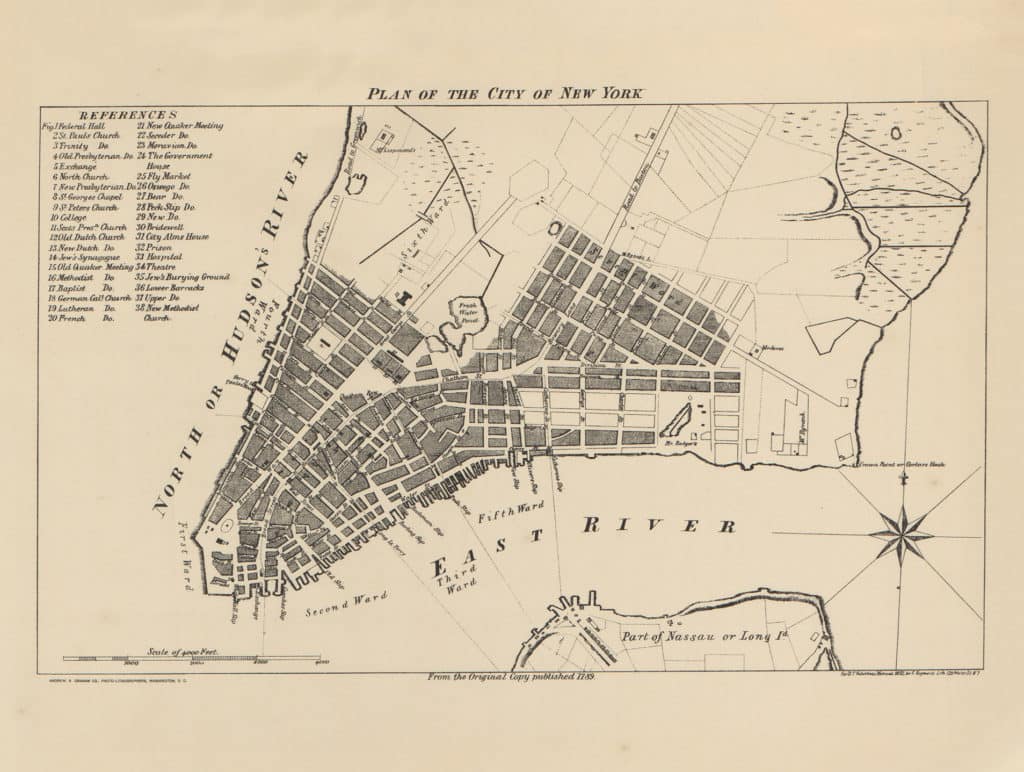
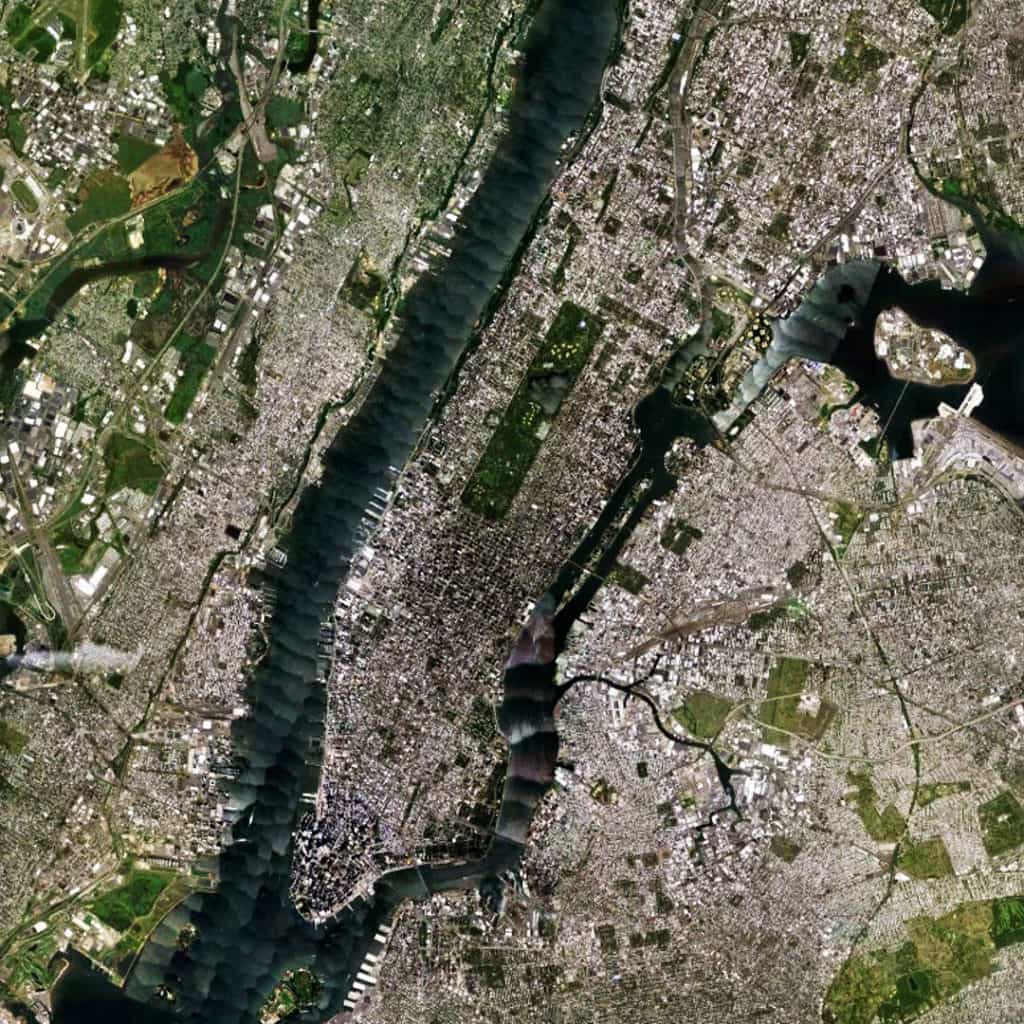
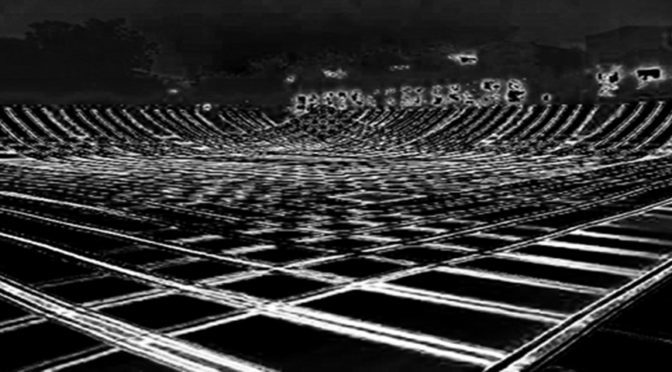
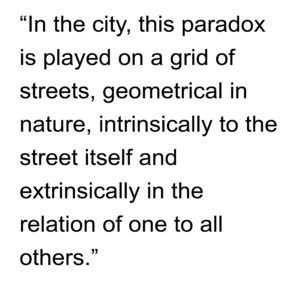 of observing that which we wish to understand and, in doing so, we become trapped within the tired dogmas of an imagined past and a condemned future.
of observing that which we wish to understand and, in doing so, we become trapped within the tired dogmas of an imagined past and a condemned future.